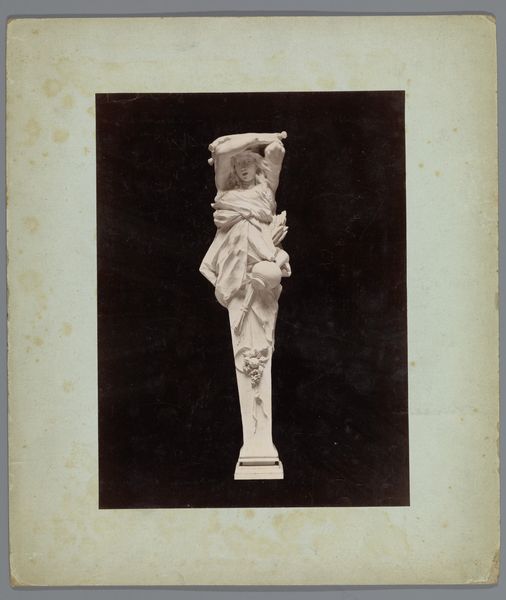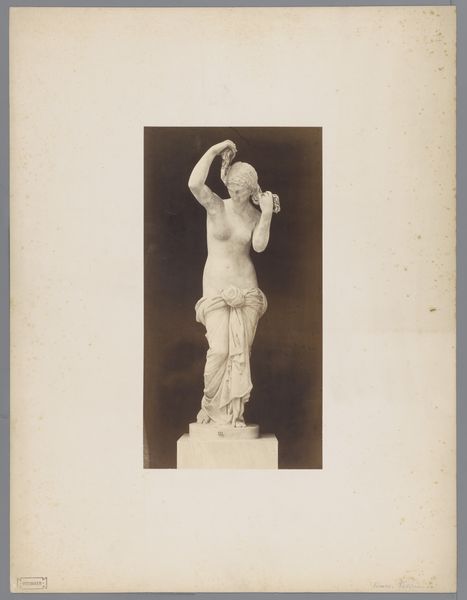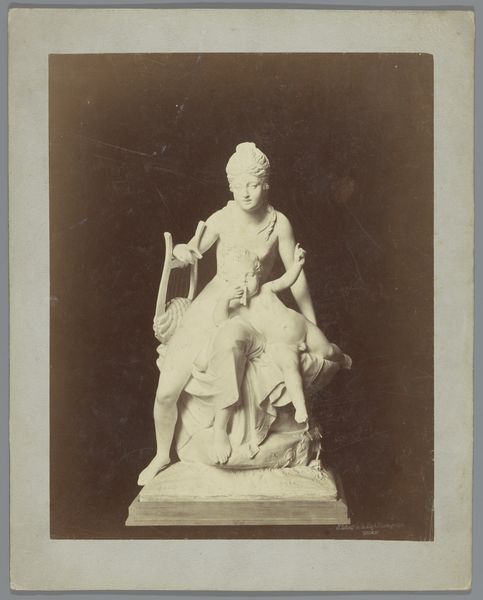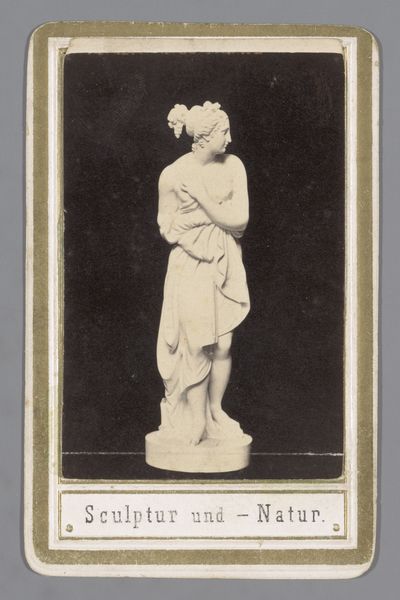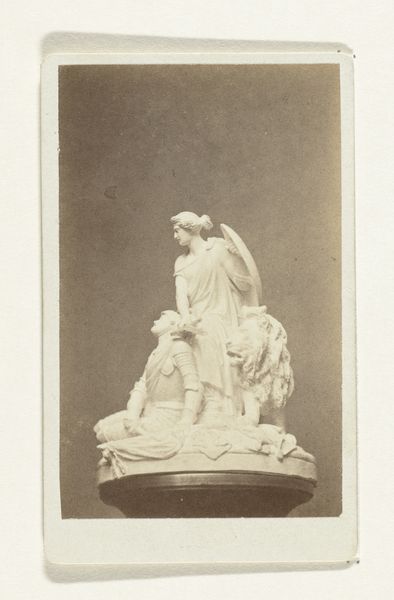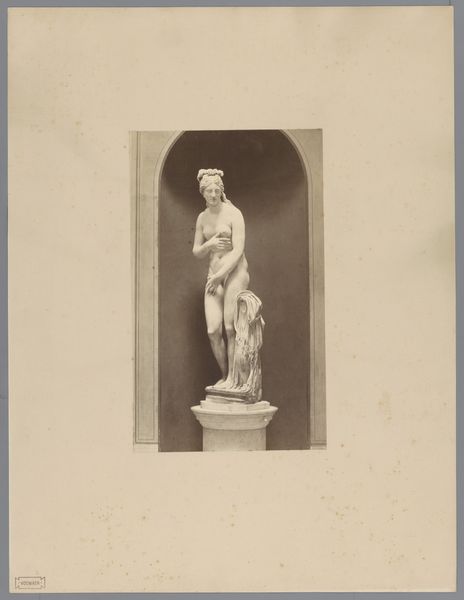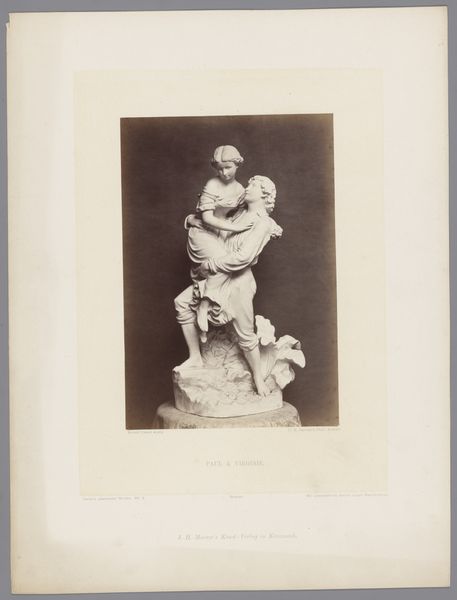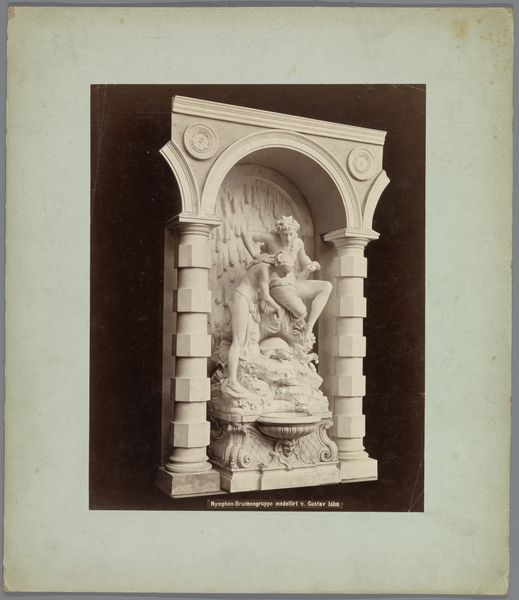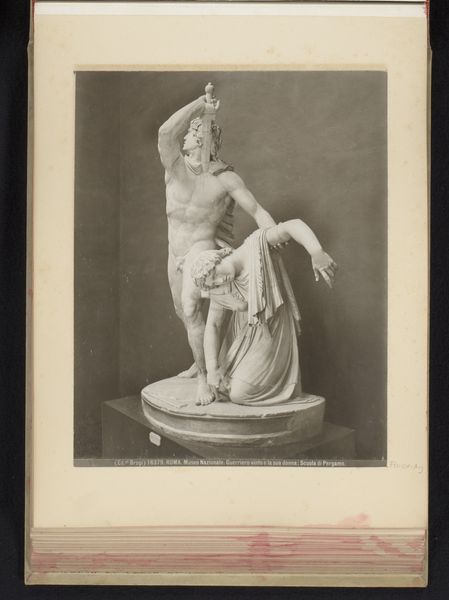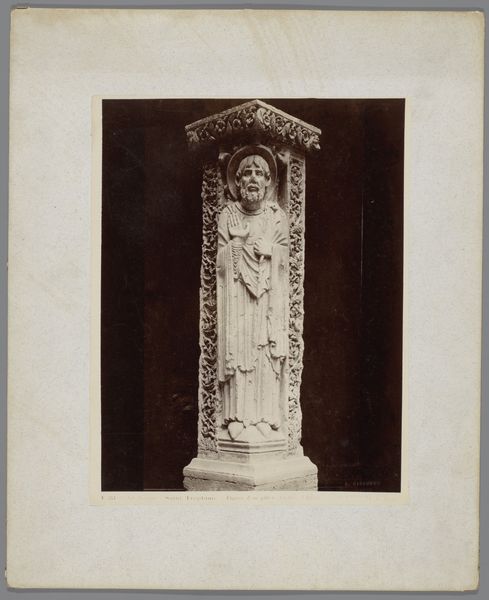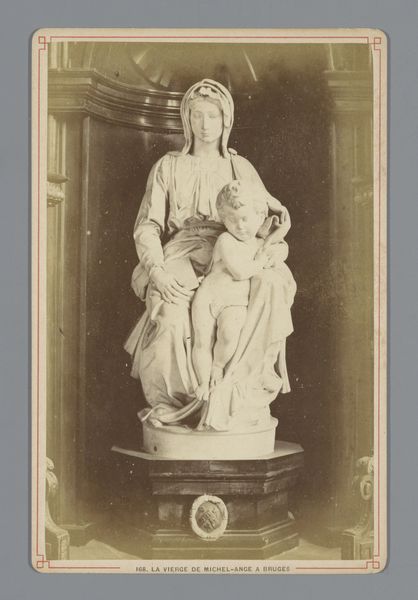
bronze, photography, sculpture
#
portrait
#
sculpture
#
bronze
#
photography
#
sculpture
#
realism
#
statue
#
monochrome
Dimensions: height 167 mm, width 109 mm
Copyright: Rijks Museum: Open Domain
Curator: Before us is a photograph of what appears to be a bronze sculpture called “Sculpture of a Girl with Geese, supposedly by Carl Cauer,” created sometime before 1910. It’s a cabinet card from Collection F.S. & Co., a format popular in that era. Editor: It immediately evokes a sort of fairytale, doesn’t it? There’s something quite touching in its monochrome presentation of that period. The delicate girl appears almost serene as she interacts with the geese. Curator: Indeed. The sentimental nature of the scene points to broader trends in art patronage during the late 19th century, when bourgeois tastes drove a demand for genre scenes and idealized representations of childhood innocence. These sculptures often functioned as decorative pieces for the home, subtly reinforcing societal values. Editor: Right. Focusing on the sculpture itself, I’m curious about the actual fabrication. Bronze casting, even on a smaller scale, involved a complex interplay of skilled labor—from the mold makers and casters to the finishers who would chase and patinate the surface. What statement does the materiality make, in your view? Curator: That's important to note, as bronze as a medium connects to earlier traditions of public sculpture but brought into a domestic sphere. These representations reinforce hierarchies even in seemingly innocuous subjects. How accessible and circulated were images of it? It brings forth discussions about art democratisation. Editor: Interesting! In light of that context, the girl becomes more symbolic, not just an emblem of innocence, but maybe, too, of aspirations to middle class and societal privilege. This reinforces the complex narrative beyond a first impression, highlighting production and access. Curator: Precisely! This image becomes a visual shorthand for certain social values that resonate with a growing audience of people at that time. Editor: It is truly interesting how much we learn simply through analysis beyond the apparent image. This deep-dive into production, labor, and society brings new insight. Curator: It adds layers of context and social awareness, doesn’t it? Thank you for pointing that out!
Comments
No comments
Be the first to comment and join the conversation on the ultimate creative platform.
